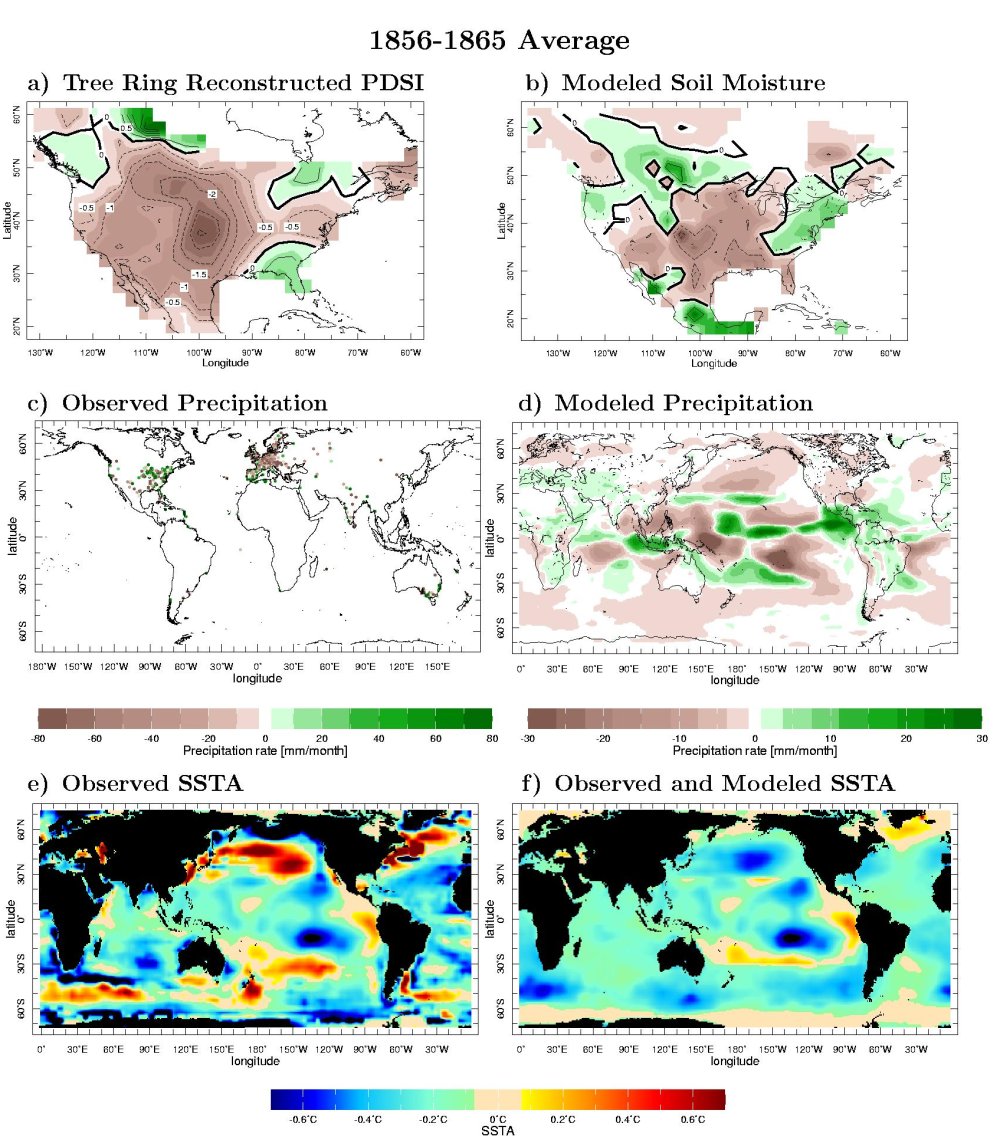Talking about drought with Mom and Dad at dinner tonight (my poor family), I brought up the “Civil War Drought”, which hit the middle of North America in the late 1850s and ’60s. Dad wanted to know more about where it hit, and I wasn’t sure. I found out. I could just call and tell him, but why not just broadcast it to the WorldWeb?
At the risk of everything currently looking like a nail to me, given the particular climate variability hammer I have in my hand, it turns out that the Civil War Drought is yet another example of what happens when people adjust to a wet climate and then get whacked when it gets dry. That’s according to the story told by Richard Seager and Celine Herweijer, who have an excellent web page on their work on this:
In the preceding decades the Indian population had increased as they moved onto the Plains in the face of the westward expansion of European settlement. Indians made this decision during an unusually wet period when grasses were high, bisons abundant, and a switch to a horse and hunting-based lifestyle seemed viable. At the same time European emigrants were heading across the Plains bound for the West accompanied by large numbers of horses, mules and oxen. The U.S. Army had also spread across the region.
This peopling of the Plains greatly impacted the bison through an increased competition for resources. During drought the bison would move to the river valleys where grasses would still survive. But these valleys now also were home to Indian camps and the emigrants headed West and their animals, all for the same reason of better water supply.
From the mid 1850s to the mid 1860s the West and Plains were struck by a severe drought.

The map (a tree ring reconstruction of drought conditions – not enough rain gauges yet) shows a bullseye in the middle of the United States, with just the northeast and the deep south escaping drought.

This fits with a bit of Canadian history. In the late 1850s the Palliser expedition explored the southern parts of what are now the Canadian Prairie Provinces. Palliser was struck by the dryness of of the region & recommeded that farming be tried only somewhat farther north in a belt that receives more rain. Several years later another explorer went through after a few wet years & recommended that farming would be quite practical over the entire area.
Farming was started in the southernmost parts of Alberta & Saskatchewan & worked well for a few years until the dry years returned.